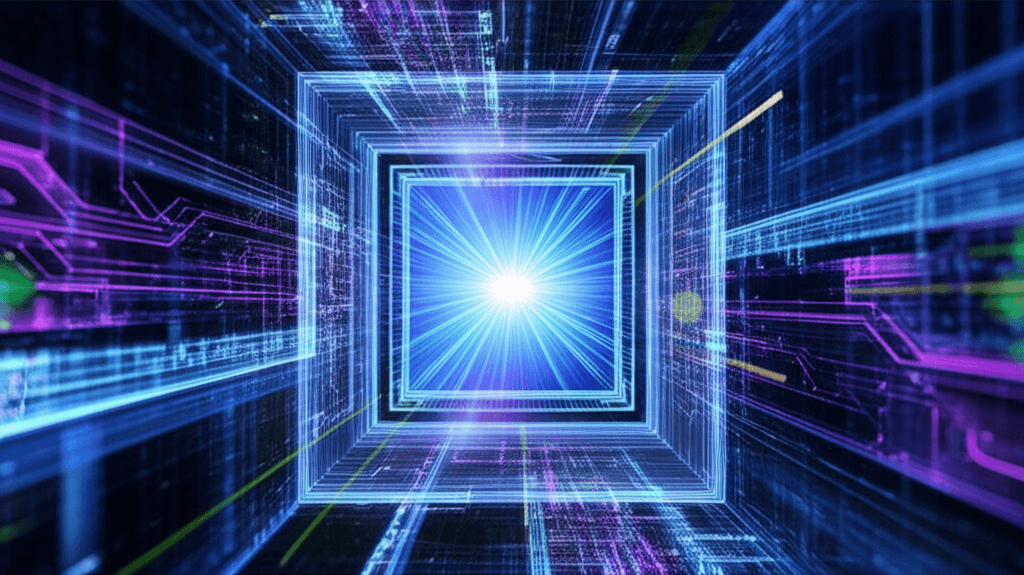Midjourney Animates Images, Begins Quest to Simulate Entire 3D Worlds
From still images to dynamic clips: Midjourney's video debut pioneers world simulation, prioritizing quality over complex controls.
June 18, 2025

Midjourney, a prominent name in the world of AI-powered image generation, has officially entered the burgeoning field of video creation with the launch of its first video model. This initial offering focuses on transforming static images generated on the platform into short, animated clips, a move the company positions as a foundational step toward a much grander vision: the real-time simulation of entire 3D worlds. The new feature represents a significant, albeit calculated, pivot for the independent research lab, building directly upon its core strength of producing high-quality, stylistically distinct visuals.
The new model, currently in its initial V1 phase, is an Image-to-Video (I2V) system.[1] In a departure from competitors that might allow users to upload any image or generate video from text prompts alone, Midjourney's tool exclusively animates images created within its own ecosystem. This closed-loop approach allows the company to maintain its signature aesthetic and ensure a high degree of visual consistency from still to moving image. The resulting clips are characterized by smooth, gentle animations, such as slow zooms and soft rotations, rather than complex action sequences. Early user feedback suggests this motion feels more natural than the effects seen in some other AI video tools, though some find it slightly rigid.[1] At launch, users have no control over specific camera angles or movements, a deliberate limitation as Midjourney prioritizes visual quality over intricate user controls in this first iteration.[1]
To use the new feature, which is exclusively available on the Midjourney website and not its long-standing Discord server, users can take an image they've generated and apply the video model to it.[1][2] This strategic shift to its web interface, which has gradually evolved from a simple gallery to a comprehensive creative dashboard, is necessitated by the more complex nature of video interaction, which is better suited to sliders, timelines, and previews than text-based commands.[1] Initial access is being limited to annual subscribers to manage server load, with clips capped at approximately 5.2 seconds, or 125 frames at 24 frames per second.[1] Midjourney has been transparent that this is not the model's maximum potential length and plans to introduce a "medium quality" setting to balance accessibility and performance.[1] To refine the model, the company is actively collecting user feedback by having them rate early video outputs, including some with intentional flaws, to identify and fix issues like unnatural visual quirks.[1]
The introduction of video places Midjourney in a competitive and rapidly evolving market, alongside major players like OpenAI's Sora, Runway, and Pika Labs.[1] However, Midjourney's strategy appears to diverge significantly from its rivals. While Sora is focused on understanding and simulating the physical world to create longer, narrative-driven scenes from text, Midjourney is leveraging its established strength in aesthetic quality.[1] Its videos are noted for their superior textures, lighting, and detail, even if they lack complex physics or action.[1] Competitors like Runway and Pika offer more extensive creative controls, such as camera movement manipulation, masking, and inpainting, which are not yet available in Midjourney's V1.[1] This distinction positions Midjourney's current tool not as a full-fledged video editor, but as a generator of high-quality, animated visual assets, like moving concept art or dynamic design elements.[1] The company has indicated that more advanced features, including camera controls, are planned for future updates.[1]
This venture into video is not just about creating short animations; it is an integral part of Midjourney's ambitious long-term objective to develop what it calls "world simulation."[3] The company's founder, David Holz, has articulated a vision that encompasses building 3D and real-time AI models that, when combined, would function as an open-world sandbox.[3] In this vision, users could create and interact with entire virtual environments, potentially developing video games or shooting movies within these AI-generated realities.[3][4] The launch of the video model is described as a critical early milestone on this path, establishing a base technology for generating dynamic, responsive worlds.[1] This forward-looking goal aligns with broader industry trends toward creating immersive, AI-driven experiences that could redefine creative workflows for architects, game developers, filmmakers, and urban planners.[4]
In conclusion, Midjourney's first video model marks a strategic and carefully executed expansion for the AI research lab. By focusing on its core competency—producing visually stunning and stylistically coherent imagery—and applying it to short-form animation, the company has carved out a unique niche in the competitive AI video landscape. While the initial features are limited in terms of user control and clip length, the emphasis on quality over complexity has been well-received.[1] This release is a clear statement of intent, signaling not only a move to compete in the video generation space but also the foundational work for a future where AI can generate and simulate entire interactive worlds, blurring the lines between creation, simulation, and reality.[1][3]